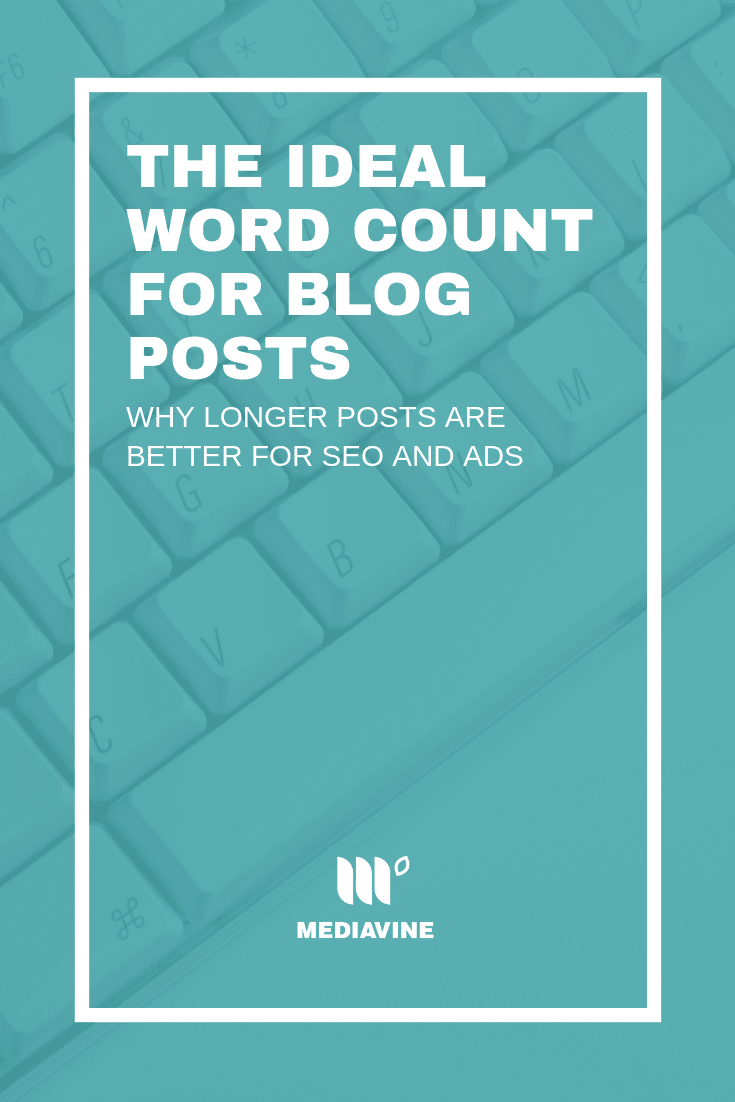Word Count: Why More is More For SEO and Revenue Alike


Just last week, we talked about the advantages of writing shorter paragraphs and shorter sentences when it comes to producing content that will maximize your RPM.
But to be clear, that doesn’t mean shorter articles. If there’s one pitfall we often see on the content front, it’s that publishers simply don’t have enough of it.
More is more when it comes to words.
If you create only short form content, you’re not going to have the same level of user engagement — or opportunities for ad placements — than you could with long-form content.
So how long is long form content?
This is not an exact science by any means, but amazingly, high school teachers and SEO experts alike generally agree on a minimum of 500 words.
If this 500-word goal seems too daunting, then you may need to rethink your content. Every guide I’ve written here has far exceeded that.
Yes, many of the topics we discuss at Mediavine could be distilled down to a sentence or two. This one is no different, e.g. “How long should your content be?”
“500 words!”
Done.

Here’s the problem, though: Would we expect publishers to trust us and actually start writing 500 words if we published that? Of course not.
These guides are long-form because they explain WHY 500 is our standard, define WHAT we’re even counting in that total, and offer advice on HOW to get there.
In fact, this is the “how” section!
For starters, this was about the length of one page back in the olden days of word processors, unless you cheated and used a bigger font size (which you should also do now … see link).
In the late 2010s, it’s also the minimum amount we’ve ever seen an SEO expert recommend, and the most successful content creators typically use this as a benchmark.
In fact, our advice is similar to that we gave when discussing how many images to use in a post: Use as many words as it takes to answer what your readers came there to read.
As a general rule, longer content ranks better because it’s going to give you more potential long tail. What does that mean?
There’s simply more content for Google to index and additional new queries you’ll be showing up for a result.
Quality matters just as much as quantity, though.
Google wants longer, quality content, not just fluff. So write thorough, useful content to answer the question or search query that brought your readers there.
Think of 500 as the minimum and as long as you need to get point across and no more.

Once again, what’s good for SEO and user experience will also help improve earnings, as Mediavine uses the amount of content you write to determine how many ads to insert.
If you have longer content, then your articles will be able to justify an increased amount of ad placements without compromising user experience as a result.
While more ads isn’t always the answer to a higher RPM, it can certainly help.
Especially if your popular, older posts weren’t optimized enough to help you reach your Mediavine health check goals, giving them a makeover could make a big difference.
Additionally, longer form content means users will be on your site longer, allowing ads that refresh like our sticky and adhesion units to do so more often, resulting in more impressions.
These ad units are highly viewable and among our highest paying, so the benefits of maximizing their output should make an immediate impact on your bottom line.
More importantly, longer form content leads to more engaged users, and as you’ve heard us say time and again, more engaged users will be more engaged with your ads.
That, ultimately, is what drives advertisers to continue buying inventory on your site, which yields a significantly higher, and more sustainable, RPM over time.
We’d never tell you to write more just for ads, but it will help on that front. Create longer, high quality content for your audience, and the SEO and revenue benefits will follow.
A common question from our food bloggers and the answer is Yes they 100% do.
The content inside your recipe card may not result in additional Mediavine in-content ads and therefore won’t solve your health check or RPM woes, but that doesn’t change the fact those are 100% still words as far as Google and your readers are concerned.

Stay up to date with the latest from Mediavine
Publishers spend time creating great content that keeps readers coming back, and we know that safeguarding that content and maintaining control over how it’s used are critical concerns in today’s …
 Eric Hochberger
Eric Hochberger
In a blog post last week, Google announced plans to launch generative AI into Search Labs with a new product called Search Generative Experience (SGE). What exactly is SGE, and …
Since ChatGPT’s release in November 2022, OpenAI’s prototype of generative AI — that is, artificial intelligence that can produce new content on demand — has dominated popular tech media. We’ve …